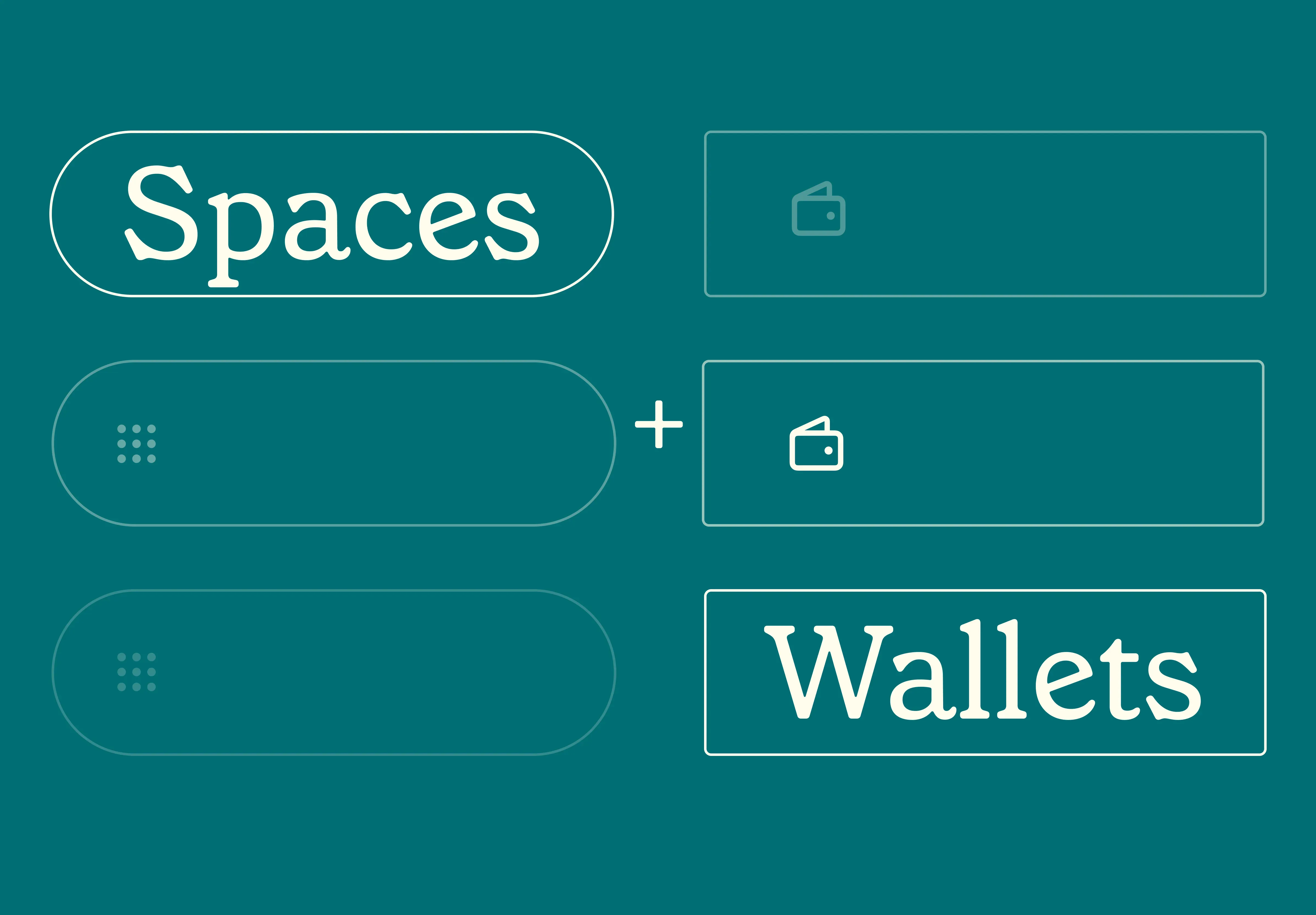18 Jul 2025
|15 min
User research plan
Learn how to create a winning user research plan with real examples, key steps, and a free downloadable template to guide your UX process.

Planning your user research sets you up for success before you start collecting any data. It's the process of mapping out what you want to learn, which methods will get you there, and how you'll organize everything to generate meaningful insights.
Good research planning helps you think through the details that matter: What specific questions do you need answered? Who are the right participants to involve? What's the best way to reach them? How will you make sense of what you discover?
This planning phase happens before any interviews, surveys, or usability tests begin. Rather than diving straight into research activities, taking time to plan sets you up to gather the data that will actually inform your decisions.
What is a user research plan?
A user research plan is a document that outlines the goals, methods, participants, timeline, and logistics for your research study. It provides a clear roadmap of what you'll study, how you'll conduct the research, and who you'll involve.
The plan includes practical details such as the:
Research questions you want to answer.
Methods you'll use to collect information.
Number of participants you'll recruit.
Timeline for completing the research.
How you'll analyze the data.
Research plans are typically a couple of pages long, and designed to be shared with your team members and stakeholders before the research begins. This helps everyone understand what to expect and makes sure the research addresses the right questions.
Plan better research
Skip the guesswork in your research planning. Start with Lyssna's tools and 690k+ participant panel. Try free today.
User research plan benefits
Creating a clear research plan helps you avoid wasting time and getting misleading results. When research is done without planning, the information you collect might not answer the important questions.
Benefits of planning include:
Alignment: Everyone understands what questions the research will answer.
Efficiency: Time and money are used wisely on the right activities.
Quality: The research methods match the questions you need answered.
Documentation: You have a record of decisions for future reference.
Without a plan, teams often make these common mistakes:
Inviting the wrong participants who don't represent actual users.
Asking questions that don't address the core issues.
Using methods that don't match the research goals.
Collecting data that's difficult to analyze or use.
As Michele Ronsen, user research executive and Founder of Curiosity Tank, explains: "The research question always comes first, and the research method follows." This principle helps ensure your chosen methods actually answer what you need to know.

What to include in a user research plan
A good research plan includes several key parts that work together to guide your research process.
Goals and objectives
User research goals describe what you want to learn in general terms. For example: “Understand why users abandon our checkout process.”
Objectives are specific, measurable outcomes you want to achieve. For example: “Identify the top three usability problems in the checkout flow.”
When writing goals and objectives:
Talk to stakeholders about what they need to learn.
Look at business metrics like conversion rates or support tickets.
Focus on problems that, if solved, would make a real difference.
Michele notes that "successful research goals should be user-focused, addressing both how and why questions related to the topic you're exploring." This user-centered approach ensures your research uncovers insights that lead to meaningful improvements.

Research questions
Research questions guide what you'll ask during your study. Good research questions are:
Specific and focused.
Possible to answer through research.
Neutral (not leading or biased).
Connected to your goals.
Example of a good question: “What challenges do users face when trying to navigate our dashboard?”
Example of a poor question: "Why is our dashboard so confusing for users?" (This assumes the dashboard is confusing.)
Top tip from Michele Ronsen
When crafting research questions, focus on three key areas: frequency (daily behaviors of users), goals/KPIs (what influences your success metrics), and unanswered questions (knowledge gaps about specific user groups).
Timeline and scope
Your timeline should outline:
When participant recruitment will begin.
When research sessions will take place.
How long analysis and synthesis will take.
When findings will be ready to share.
Always add some extra time for unexpected delays. The scope section should clearly state what is included in the research and what isn't.
Logistics and budget
This section covers practical details like:
How you'll find and recruit participants.
What incentives you'll offer participants.
What tools and technology you'll use.
Who will conduct the sessions and take notes.
What documents you'll need (consent forms, scripts, etc.).

User research plan steps
Here are the key steps to create a research plan that sets you up for success.
1. Define the purpose of your research
Start by identifying the business problem or opportunity your research will address. Talk to stakeholders to understand what decisions they need to make based on the research.
Key questions to answer:
What do we need to learn?
Why do we need this information now?
How will the findings be used?
What decisions will this research inform?
Connect your research goals to business metrics like conversion rates, customer satisfaction scores, or support ticket volume. This connection helps you design research that directly addresses measurable outcomes and makes it easier to demonstrate the value of your findings to stakeholders who think in terms of business impact.
Top tip from Michele Ronsen
Start every research project with a stakeholder kick-off meeting. Engage key stakeholders in a collaborative discussion to gather context, understand their existing knowledge, and prioritize key questions. This ensures stakeholder commitment and buy-in for acting on your research findings.
2. Select your research methods
Choose research methods that match what you need to learn. Different methods work better for different questions – you can use the below table as a general guide.
Method | Best for | Timeline | Typical no of participants |
|---|---|---|---|
User interviews | Understanding behaviors, attitudes, and needs | 2–3 weeks | 5–8 people |
Usability testing | Finding problems with interfaces | 1–2 weeks | 10–20 people |
Surveys | Collecting data from many users | 1–3 weeks | 100+ people |
Card sorting | Organizing information | 1–2 weeks | 15–30 people |
Keep in mind that moderated research (like user interviews) typically takes longer to coordinate and conduct than unmoderated methods (like surveys or remote usability testing), which can affect your timeline planning.
Using multiple methods also often gives you more complete information. For example, combining interviews (for depth) with surveys (for breadth).

3. Decide on participant criteria
Define who should participate in your research based on your goals. Consider:
Who uses your product or would use it in the future.
What characteristics matter (age, experience level, job role, etc.).
How many participants you need for reliable results.
Create screening questions to identify the right participants. For example, if you're researching a financial app, you might want people who manage their own finances and use mobile banking.
4. Plan your schedule
Create a realistic timeline for your research that includes:
Preparation time (writing interview scripts, setting up tools, etc.).
Recruitment period.
Research sessions (remember to allow yourself some time between sessions).
Analysis and synthesis (typically 1–2 days per method).
Reporting and sharing findings.
Your recruitment timeline will vary depending on your method. Self-recruiting from your own network might take 1–2 weeks, while using a research panel (like the one we offer at Lyssna) can speed this up significantly.
5. Draft your documentation
Before starting research, prepare these documents in addition to your research plan:
Screener questions (to find the right participants).
Consent forms (explaining how data will be used).
Discussion guides or test scripts (the questions you'll ask).
Note-taking templates (for consistent data collection).
Having these ready before you begin creates consistency across your research sessions.

How to choose user research methods and participants
Two key decisions will shape your research: what methods to use and who to recruit.
Qualitative vs quantitative approaches
Research methods fall into two main categories:
Qualitative research helps you understand why and how things happen. It uses methods like:
Contextual inquiry
Focus groups
These methods typically involve fewer participants but provide rich, detailed information.
Quantitative research helps you measure what’s happening and how often. It uses methods like:
Analytics data
A/B testing
Card sorting with large samples
These methods involve more participants and give you numbers and statistics.
Often the best research plan format includes both quantitative and qualitative methods to get a complete picture. For example, use surveys to identify trends, then interviews to understand the reasons behind those trends.

Recruiting strategies
Finding the right participants is crucial for good research. You can recruit:
Internal participants (existing users or customers).
External participants (people who match your target audience).
Effective recruiting tips:
Write clear screening questions that identify your target participants.
Offer appropriate incentives based on time commitment and participant expertise.
Consider using research panels for faster and targeted recruitment.
Plan for no-shows by recruiting extra participants.
User research plan template
Below is a simple template you can adapt for your research. You can also copy our Google Docs template for easy editing.
Project Overview
Project name: [Name of the research project]
Date: [When the plan was created]
Researcher(s): [Who’s leading the research]
Stakeholders: [Who needs the results]
Executive Summary
[Brief description of the research purpose and expected outcomes]
Background
[Context about why this research is needed and how it connects to business metrics]
Research Goals and Questions
Goal 1: [Description]
Question 1a: [Specific question]
Question 1b: [Specific question]
Goal 2: [Description]
Question 2a: [Specific question]
Methodology
[Research methods you’ll use and why]
Participant Criteria
[Description of who will participate in the research and any screening requirements]
Timeline and Scope
Recruitment: [dates]
Research sessions: [dates]
Analysis and synthesis: [dates]
Reporting: [dates]
What’s included: [scope]
What’s not included: [out of scope]
Logistics
Recruitment methods: [how you’ll find participants]
Incentives: [what you’ll offer participants]
Tools and technology: [platforms, software]
Team roles: [who does what]
Budget: [costs and resources needed]
Required documents: [consent forms, scripts, etc.]
Analysis and Synthesis Approach
[How you’ll analyze the data and synthesize findings]
Reporting Plan
[How you’ll share your results and recommendations]

User research plan examples
Looking at real research plans can help you understand how to structure your own. Here are some helpful examples from different types of research projects:
Government usability testing plans
Digital.gov Usability Starter Kit – Free downloadable templates from the US government including usability testing scripts, consent forms, and report templates.
Academic research planning guidance
UK Department for Education research plans – Examples from government user researchers showing how to plan ethical, inclusive research with diverse user groups.
Nielsen Norman Group research plans
NN/g research plan template – A comprehensive guide from the leading UX research authority on creating effective research plans with proper documentation.
Figma Community templates
User Research Plan Templates on Figma – Interactive, collaborative templates from the design community that you can duplicate and customize for your own projects.
FigJam research planning
FigJam Research Plan Template – A collaborative template that helps teams define research questions, goals, and methods while keeping everyone aligned.
Simple visual planning approach
UserLab's 5 Whys planning template – A streamlined approach using the "5 Whys and 1 How" framework that works well for quick planning and stakeholder communication.
Collaborative planning templates
Miro's UX research plan template – A visual template that allows teams to plan research collaboratively and work together in real-time.

User research planning mistakes to avoid
1. Asking biased or leading questions
The way you ask questions can influence the answers you get. Watch out for:
Biased question: "How easy was our simple checkout process?"This assumes the process is both easy and simple.
Unbiased question: "How would you describe your experience with the checkout process?"This allows participants to share their genuine experience.
Review all your research questions to remove bias, leading language, assumptions, and loaded terms.
2. Leaving stakeholders out of the loop
Involve key stakeholders throughout the research process:
Share the research plan for feedback before starting.
Invite them to observe some research sessions.
Provide brief updates on progress.
Ask for input during analysis.
This builds trust and ensures the findings will be used when decisions are made.

3. Not testing your setup beforehand
Before running your first moderated session:
Have a practice session with a colleague.
Test all technology and recording equipment.
Make sure links, prototypes, and materials work.
Prepare backup plans for technical problems.
For unmoderated research:
Test the entire participant experience yourself.
Check that all links and prototypes work across different devices and browsers.
Verify instructions are clear and complete.
Set up proper tracking to monitor completion rates.
4. Unclear research scope and focus
Decide whether your research needs:
Deep understanding of a few topics.
Broader insights across many areas.
Your available time and resources will help determine this balance. For critical features or complex problems, going deep is usually worth the extra time.
5. Asking the wrong research questions
Avoid questions that put design responsibility on participants or ask about hypothetical future behavior. Common mistakes include:
"What features do you want in our product?" - This puts design responsibility on people who lack context about your business goals, technical constraints, and strategic roadmap.
"Would you buy this product?" - Asking about future behavior often leads to inaccurate answers, as people's intentions rarely match their actual actions.
"Do you like our product?" - This is too broad and doesn't provide actionable insights.
As Michele points out: "Decision-making regarding product features should be based on a combination of inputs including user feedback, business goals, technical feasibility, staffing and resources, and the competitive landscape."
Instead, focus on understanding current behaviors, needs, and experiences. Ask questions like "How do you currently solve this problem?" or "What challenges do you face when trying to accomplish [specific task]?"

How to review and share your user research plan
Your research plan isn't finished once you've written it – getting feedback and communicating results effectively are crucial final steps.
Review and iterate
After writing your research plan:
Share it with stakeholders and team members.
Ask for feedback on clarity and completeness.
Make sure it addresses the most important questions.
Revise based on input.
This review process helps catch problems early and builds buy-in from everyone involved.
Communicate findings effectively
When research is complete, tailor your reporting to different audiences:
For executives: High-level insights and recommendations.
For designers: Detailed user behaviors and pain points.
For developers: Specific issues to address.
Use visuals, quotes, and examples to bring your findings to life. Always connect insights back to the original research questions.
For more tips, check out our workshop on how to effectively present research to your stakeholders.
Start planning today
Ready to plan research that drives results? Get free access to Lyssna's planning tools and participant recruitment. Start now.
Diane Leyman is the Senior Content Marketing Manager at Lyssna. She has extensive experience in content strategy and management within the SaaS industry, along with a background in editorial and content roles across the publishing and not-for-profit sectors.
You may also like these articles


Try for free today
Join over 320,000+ marketers, designers, researchers, and product leaders who use Lyssna to make data-driven decisions.
No credit card required






